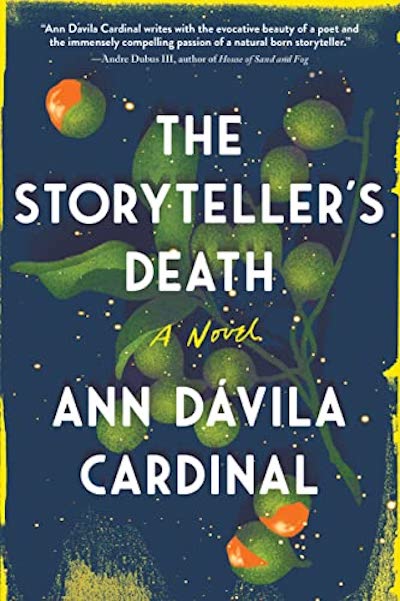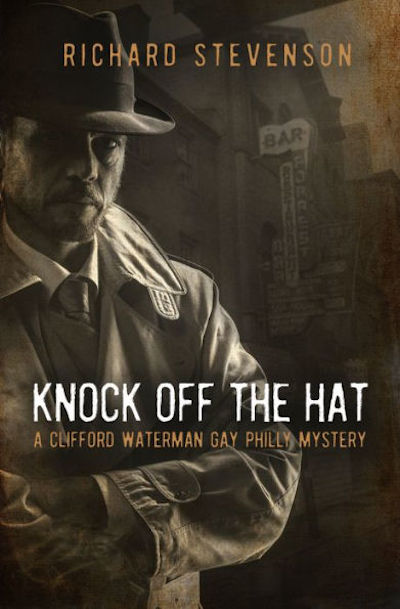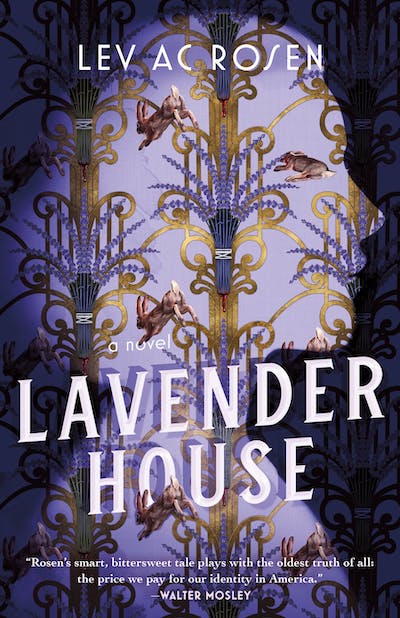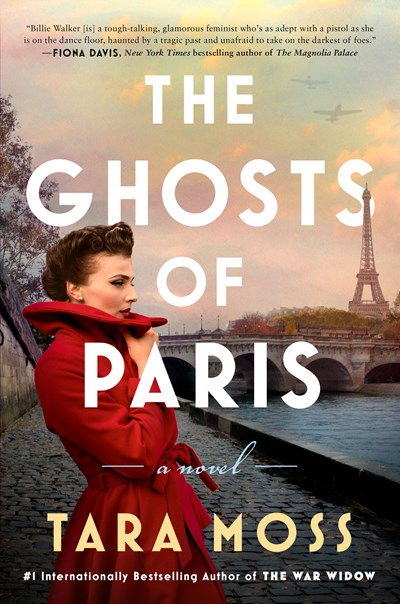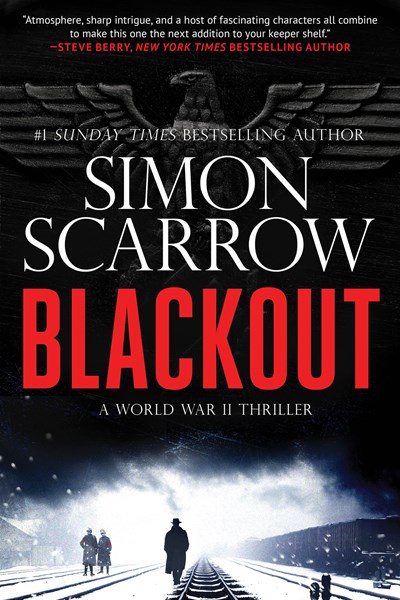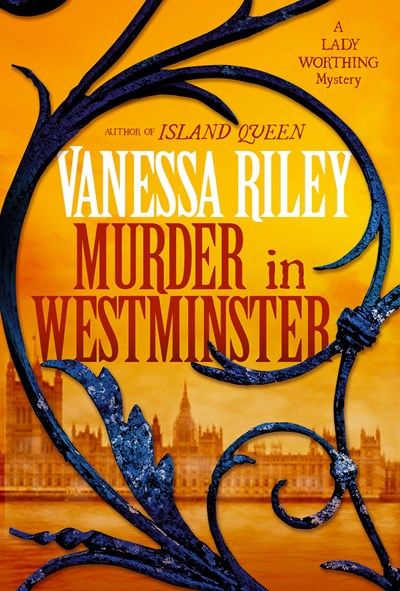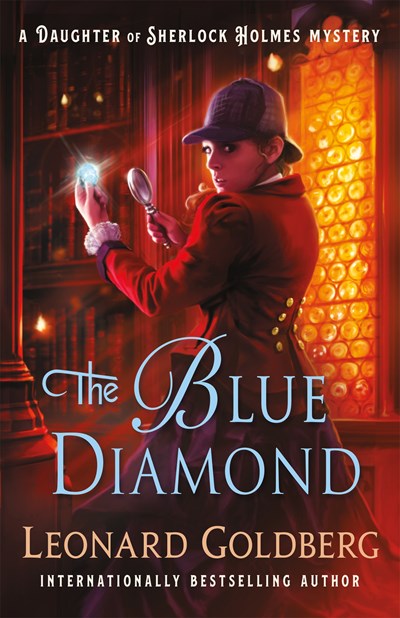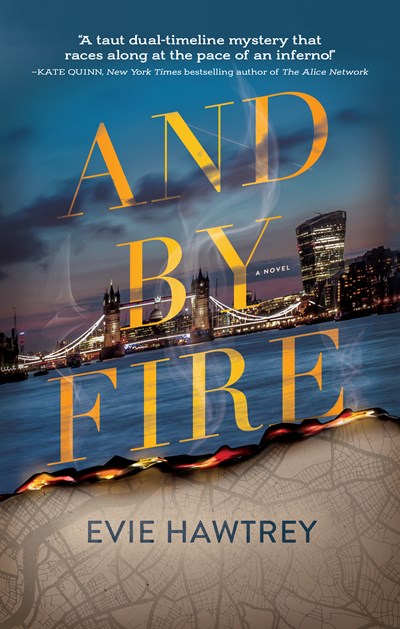Fraught connections between different worlds hold together this coming-of-age tale: connections between Puerto Rican families in the United States and their homeland; between the past and the present; between the real world and one made of stories. As the book opens, its shy protagonist, Isla Larsen Sanchez, is visiting her mother’s native Puerto Rico. Back in New Jersey, “everyone [looks] so colorless, like the underbelly of a fish,” but at least there she can do her own thing. The island, however, is overflowing with color but also with cheek-pinching aunts who expect proper behavior from a young lady with “not one drop of blood…that is not European.” Over the years, as she spends every summer in Puerto Rico, Isla comes to realize that her oh-so-pure blood may have given her…well, she’s not so sure it’s a gift. She sees visions of tales the cuentistas, storytelling women in her family, have told her—but only after their deaths. When one story involves a murder, and Isla finds that she can be physically hurt by weapons in the visions, readers find themselves dropped into a combination of magical realism, terror, and mystery, all wrapped in a shroud of family secrets and dubious honor. This rich story about stories can work as a crossunder, meaning it can be enjoyed by young adults as well as adult readers; Toni Morrison fans will particularly enjoy the otherworld-tinged drama
Historical
Una Kelly is a pickpocket in 1883 New York City, artfully dodging the police and turning her loot over to the head of her pickpocket ring, the quietly ruthless Marm Blei. Una is saving her pay to leave this miserable life, but it’s slow going, so she chances a side gig—selling a trinket she steals rather than turning it over to Marm. This puts her at the site of a murder, and now she’s accused and on the run. Her unusual hiding place—one of the country’s first nursing schools, at Bellevue Hospital—is the intriguing, politics- and emotion-laden setting for most of the book. Only educated ladies are accepted as nurses, but Una is neither schooled nor genteel, and faking both. Her nervous, always-on-your-toes code switching will be familiar to immigrant readers as well as anyone who’s reached for something out of grasp, and heavy doses of realism are thrown in as Una fights bullies while making a great friend and even finding romance. Skendandore’s (The Second Life of Mirielle West) intrepid heroine continues investigating the crime she’s accused of, too, making the book a thoroughly enjoyable and compelling medical history, mystery, and romance. Side benefit: a look at attitudes toward the then-emerging science of blood transfusion.
It’s summer in post-World-War-II Philadelphia. The temperature is rising, and so too is the gay bashing, thanks to the police department and the City’s hugely corrupt judicial system. Tough-talking, but also hugely funny, Clifford Waterman—a former police detective who received a dishonorable discharge from the Army for being caught in the act in Cairo—is trying to make a go as a noirish PI. He’s hired to get the charges against a young man caught up in a bar raid dismissed and his $500 bribe reduced. Shake-downs of lesbians and gay men are nothing new, but Waterman begins to realize that the scope of the attacks and the size of the bribes are escalating hugely—along with the psychological damage and suicides that the publicity is causing among the LGBTQ community. Waterman’s search is a broad one, taking him throughout the greater Philadelphia area and up and down the social ladder. Sex and lovers, the relationships between Black and white queer men—expect the racist language of the day—and jazz and the blues all contribute to creating a memorable time and place. It’s great to have the author of the ground-breaking Don Strachey novels back with what we can only hope will be as prolific a series.
It’s 2 p.m., and Evander “Andy” Mills is sitting alone at a bar, suicidal ideations dancing in his head. And for a good reason. A detective with the San Francisco police, his world was ripped apart when he was caught in flagrante delicto during a raid on a gay bar and thrown off the police force. This is, after all, 1952, and until now Andy has succeeded in keeping his sexuality locked away from the rest of his life. As he reaches for his fifth martini, he’s interrupted by a society woman who has a proposal for him: investigate the mysterious death of her wife, Irene Lamontaine, who died in Lavender House, the family estate. Did she say “wife?” Indeed she did. And off we go to Lavender House, home to the Lamontaine family, who own a soap dynasty, and where nearly everyone, from family members to the help, is absolutely queer. Their world is a fascinating one, as free as it is safe—until, that is, Irene was murdered. No reader who’s made it through the first chapter could ever think of abandoning this magical novel as it morphs into a sort of locked-room mystery with culprits everywhere. But as engrossing as the Lamontaines may be, it’s Andy who centers the narrative, and who emerges from the story—to use contemporary jargon—beginning to heal, both physically and emotionally. Here’s hoping this is just the beginning of Andy Mills’ investigations.
Women in 1920s New York had to know their place. Even “girls” who worked, like Schellman’s heroine in this series debut, seamstress Vivian Kelly. Since they made so little, women could only get treats like a restaurant meal if a man bought it, yet taking gifts from a man was frowned upon. While Vivian is firmly stuck in this life by day, at night she shrugs off the stiff expectations of Florence, the older sister she lives with, and the meddlesome, haughty neighbor who predicts Vivian will “end up like your poor whore of a mother.” At the Nightingale, the speakeasy where Vivian dances with abandon and pursues her interest in both men and women, she feels more herself than anywhere else. Her idyll is marred, though, when she finds a corpse in the alley behind the club and later is arrested for being in an illegal bar; the Nightingale’s owner bails Vivian out and asks her to repay the debt by finding out more about the dead man. Schellman (Lily Adler Mysteries series) makes full use of underground life during prohibition, the romantic appeal of a speakeasy, and the love and camaraderie of poor families and friends to create a murder mystery with a rich historical and social backdrop. Vivian’s impetuousness and determination make her both lovable and compelling, and a possible lead on finding her mother’s family will bring readers back for the next series installment.
Part historical fiction, part mystery, this sweeping novel picks up the reader and transports them on a whirlwind trip from Sydney to London to Paris, where the long and compelling search finally comes to an end. It’s 1947, and the Second World War has been over for two years, although its impact remains enormous. Detective Billie Walker is hired by a well-to-do woman to find her husband, who’s been missing in Europe these past two years, and before you can say Qantas, Billie is up in the air, accompanied by Sam, her handsome assistant. Funny thing is, Billie also has a husband lost in Europe—a wartime photographer—providing the story with a double plot. But the greatest pleasure in this book comes from all the rich history and social commentary: the experiences of the Australian Aboriginal peoples with the police, the legal persecution of Australia’s gay men, Dior’s new look, London as it climbs out of from the Blitz, Paris as it tries to recoup, and so much more. The author has done her research, and it shows—in the best possible way. Moss does slam on the brakes, and the book rattles to a quick close, but that’s O.K. We’re happy where we’ve landed, and would follow Billie Walker anywhere.
It’s 1939 and a vicious serial killer is pursuing his bloody wont in Berlin’s trains. Assigned to these cases, which his superiors in the Kriminalpolizei, or Kripo, think are unrelated accidents, is Inspector Horst Schenke, a former racecar driver who’s embarrassed that injuries related to his old career have kept him from the front. He’s not one to rock the boat but quietly resists the ridiculous bureaucracy, lawlessness, and brutality of “the party,” even as his thuggish superiors hint and then state outright that he won’t get ahead without a Nazi badge. Glamorous dates (or as glamorous as nightly blackouts, rationing, and lack of fuel allow) with his resistance-leaning girlfriend keep the moral quandaries from eating Schenke up too much, but when the killer goes after a Jewish woman, Ruth Frankel, a surviving witness whom the inspector feels compelled to save, the pressure is on. Nazi higher-ups feel the woman can be used as bait and force a bootlicking rule-follower to shadow Schenke’s every move so he’ll comply. At the same time, the killer continues his spree while attempting to cover his tracks, an effort that puts Ruth and her protector in grave danger. The close calls and chases in this novel are truly scary, and the unusual perspective ramps up the intrigue. Fans of serial-killer mysteries who are looking for something a little different are the audience for this one.
Vanessa Riley is known for her several series—both historical fiction and regency romances—often featuring diverse casts; her deep research into 18th-century communities of color; and her strong storytelling skills. Roll it all up, add a criminal element, and you have a delightful murder mystery—a first, for Riley— that entertains but also educates. Young Lady Abigail Worthing, of African and Scottish descent, is one strong leading lady, and when her next door neighbor is murdered while Abigail is on her way to an pro-abolitionist meeting, Abigail decides she had better take on the search for the killer—before being accused of the murder herself. Because Abigail, with her skin tone and family history, is all too easy to blame. Abigail’s complex world, a mix of family, Caribbean immigrants, and the ton, is exactly the world readers today are eager to discover—and to return to. Calling all regency enthusiasts, historical mystery fans, and Bridgerton devotees—this one’s for you.
221b Baker St. is home to a new generation, with Sherlock Holmes’s daughter, Joanna, and her husband, Dr. John Watson Jr., son of Sherlock’s longtime sidekick, in residence and solving crimes. In this sixth in the series, Joanna, who’s just as meticulous and insightful as her father, is called by Scotland Yard to help with a series of thefts in hotels around London. Joanna wonders why she and the Yard are required until she learns that the victim of the most recent crime is the governor general of South Africa, and what was stolen from his locked room was the enormously valuable blue diamond, the search for which sets the Watsons questioning everyone from diamond merchants to underworld dealers. In addition, it’s 1917, and the detectives must pursue another stolen item, one that’s crucial to the British effort to win the Great War. This part of the plot sees the famous offspring draw on every ounce of their courage as well as their connections with Sherlock’s Baker St. Irregulars, a gang of ruffian children, to win the day. Along the way, readers will enjoy the many references to Sherlock Holmes’s cases, often the subject of reminiscences by his daughter and her father-in-law; also a pleasure is the relationship between Joanna and John, she a wily sleuth and he an adoring supporter of her eccentricities. For fans of the great detective, of course, but also those who enjoy tales of wartime espionage.
As it destroys, fire creates mysteries in Hawtrey’s past and present-day London. The Great Fire in 1666 is the fulcrum of the historical story. Before the devastation, we find Christopher Wren politicking as he seeks to build his dream dome at St. Paul’s Cathedral, while stingier planners want to continue the never-ending repairs to the existing roof. Initially outsiders to any drama, courtier to the queen Margaret Dove and Etienne Belland, Margaret’s forbidden love (he is both a foreigner and, as the king’s fireworks maker, a lowly tradesman), find themselves drawn into the fray. When their friend is killed in St. Paul’s during the fire, there may have been more to it than met the eye, and the two continue their romance while looking into what really happened. In the modern city, Nigella Parker and Colm O’Leary are police officers assigned to investigate what becomes a deadly series of fires, by an arsonist who arranges both burned wooden bodies and then real charred victims in poses that seem to mock churches. Like Margaret and Etienne, these two shouldn’t be together—they tried it once and nope—and like their 1666 counterparts, they must fight what appearances seem to dictate and what their instincts tell them to be true. Adding to the atmospheric, absorbing mystery is the depth of research Hawtrey has obviously done on both the Great Fire and St. Paul’s and its famous creator. Try this alongside Robert J. Lloyd’s The Bloodless Boy, which also recreates 17th-century London.

